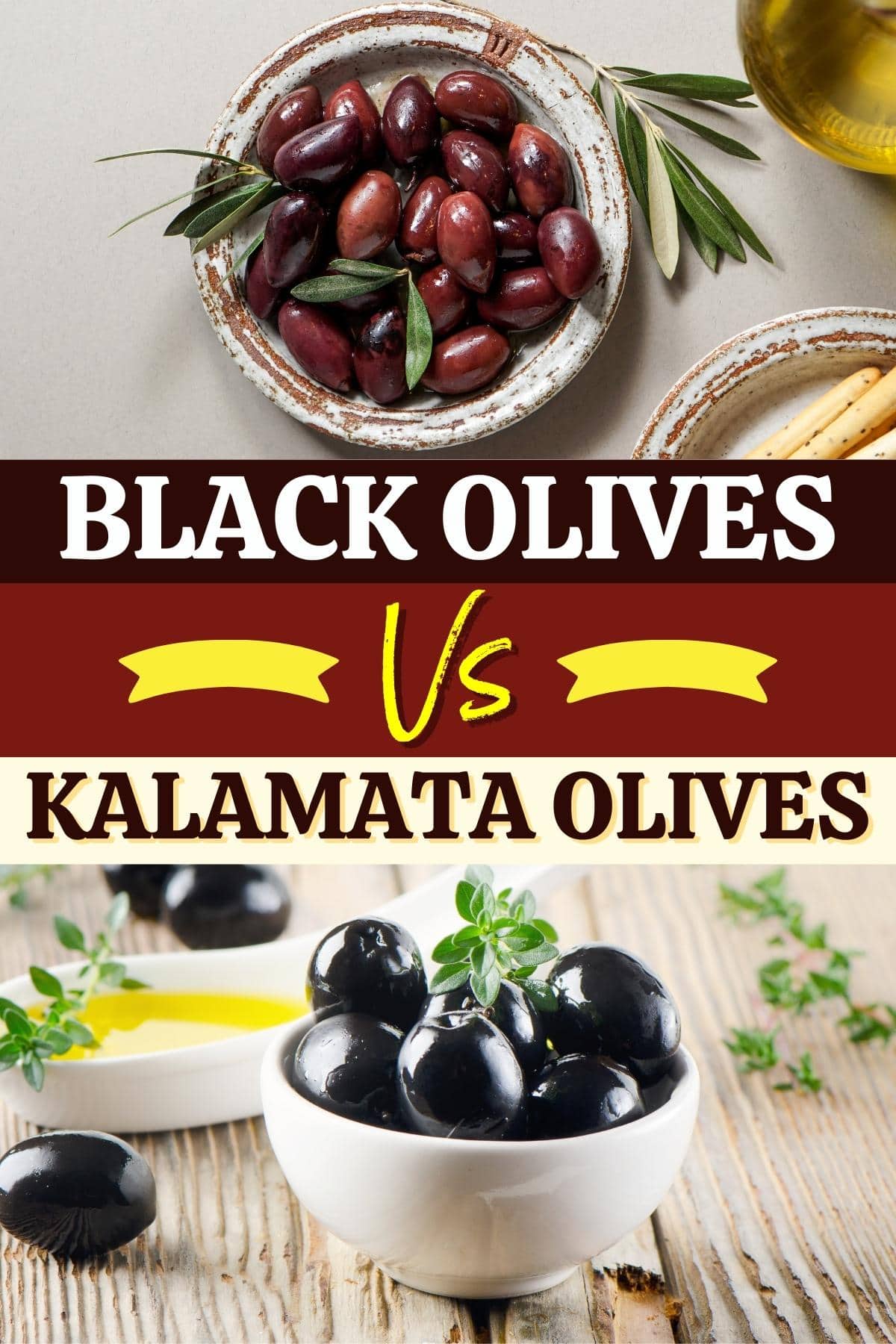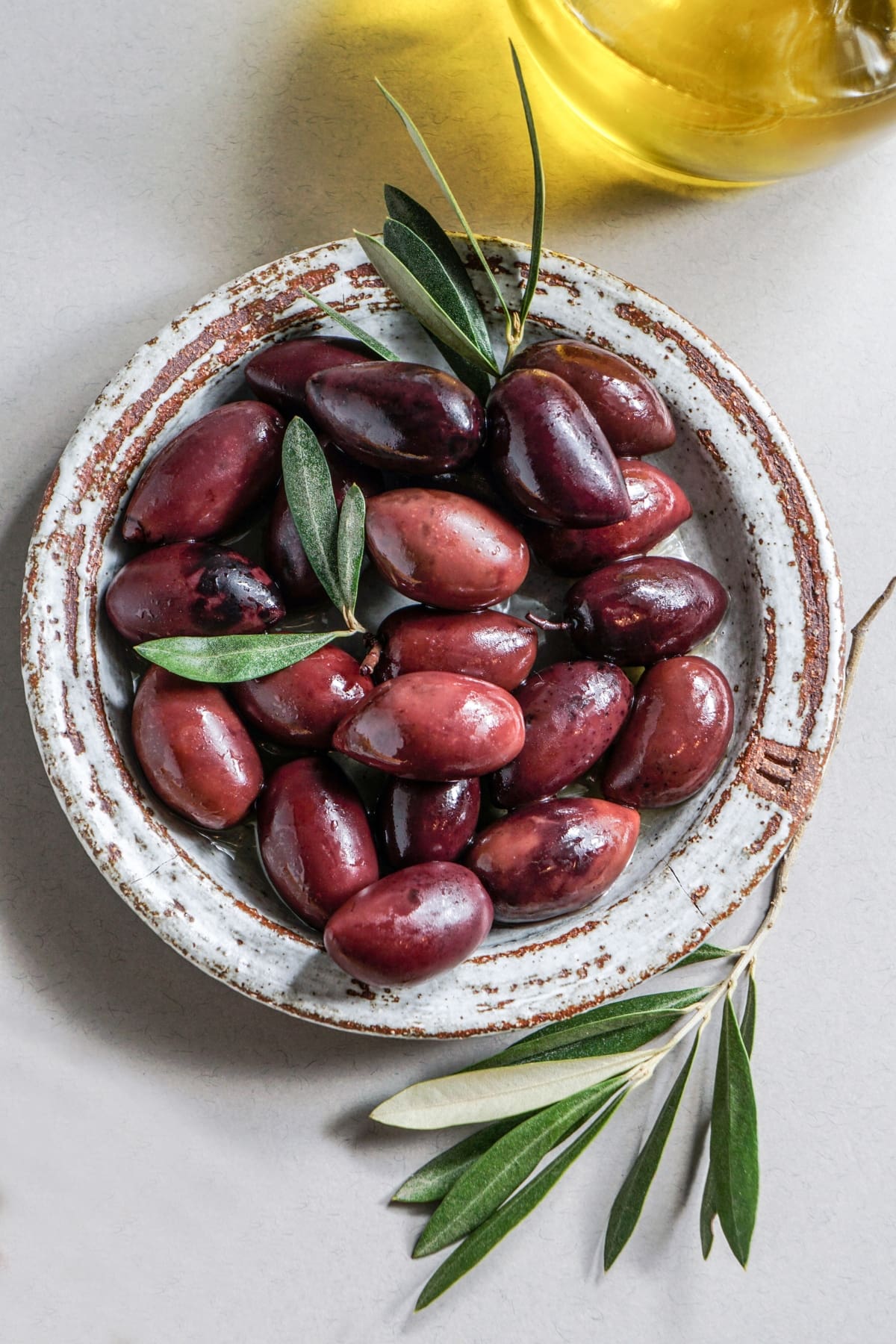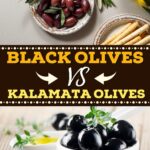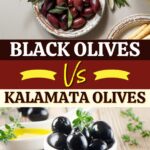Black olives and kalamata olives have a few differences between them.
It mainly comes down to taste, texture, origin, appearance, cost, and how they’re harvested.
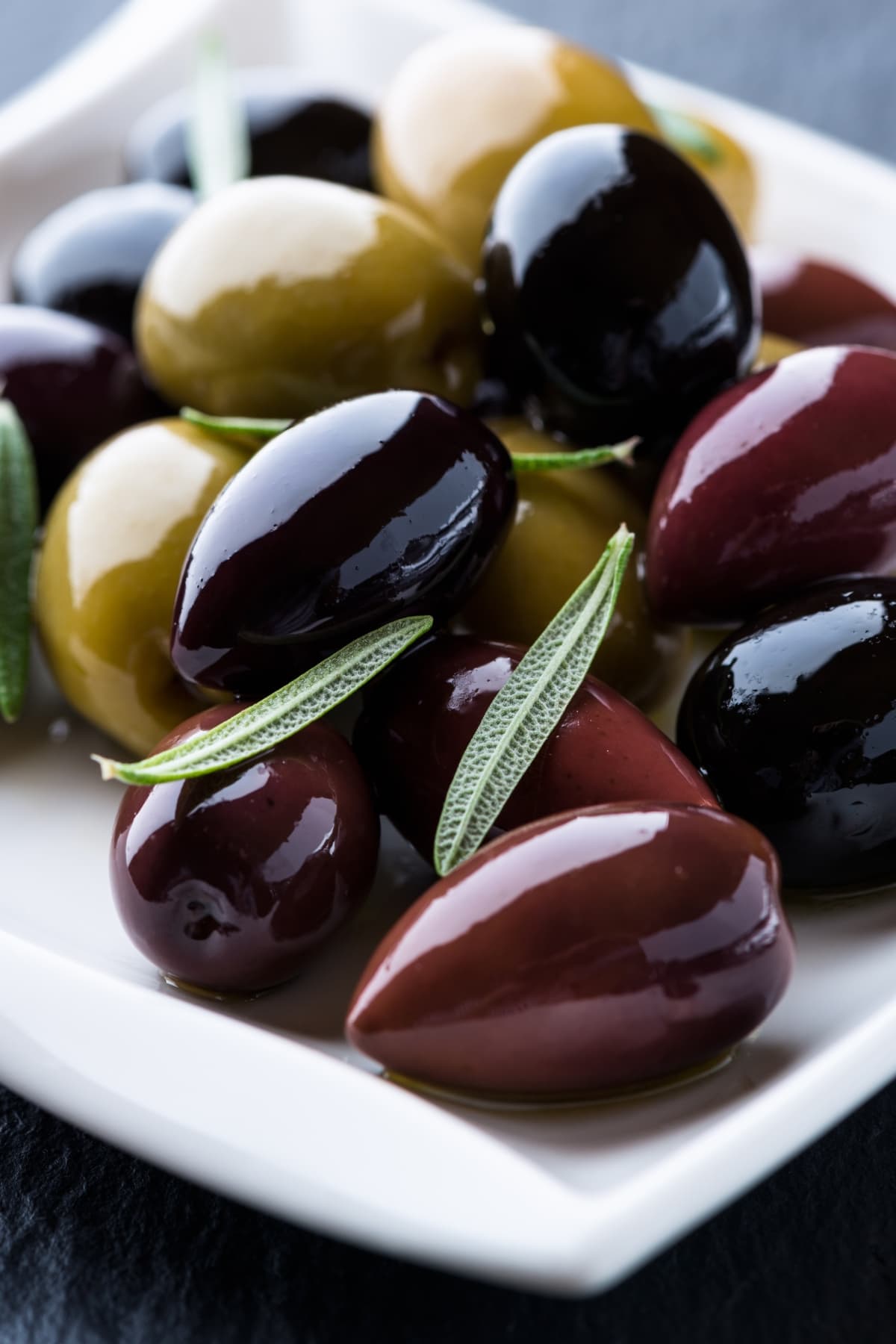
These two popular olive varieties bring unique flavor profiles to the table.
But what makes them different? Are they interchangeable in recipes? And how do you choose which ones to use?
Join me and dive into the world of these tasty little fruits and discover what sets them apart!
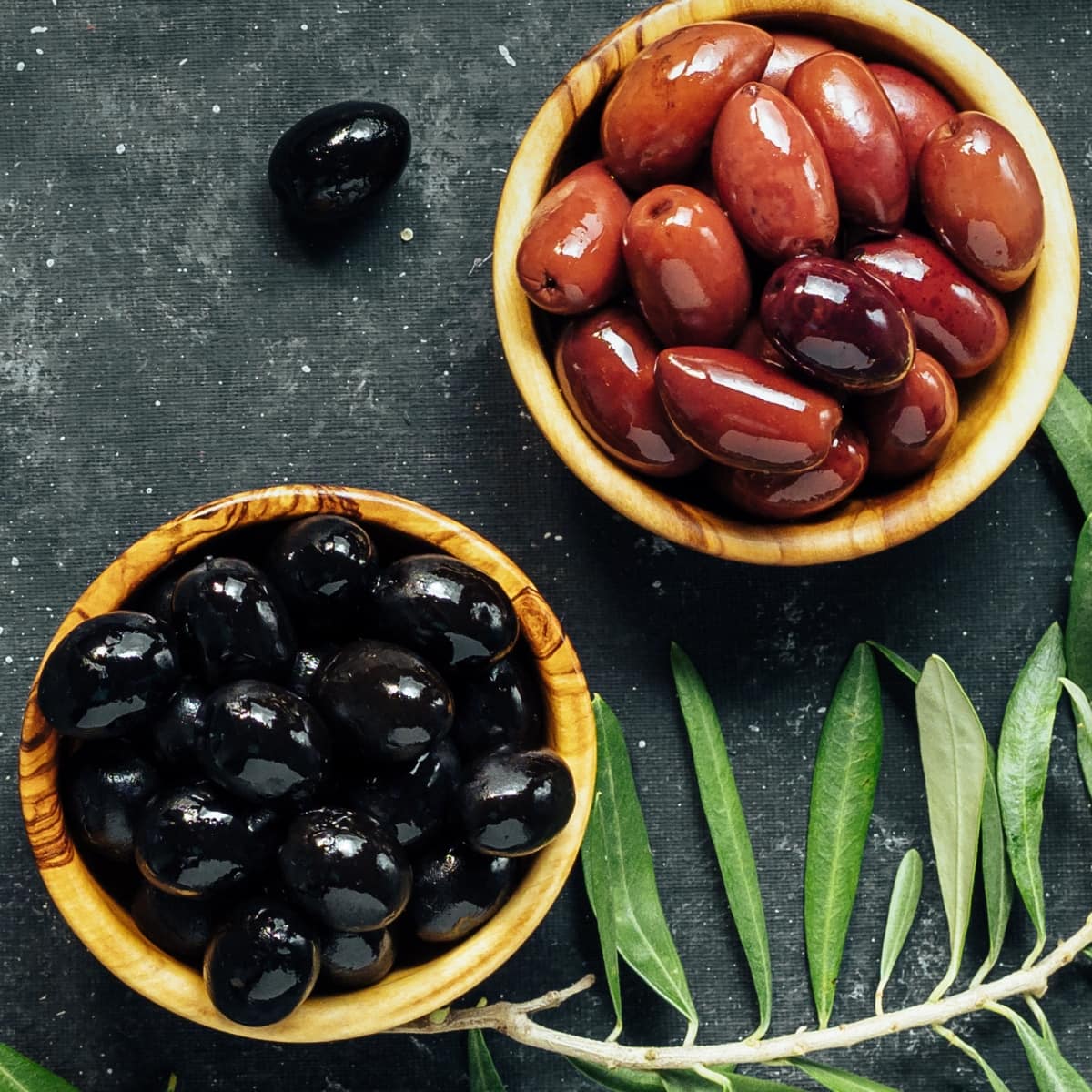
Black Olives vs. Kalamata Olives (What’s the Difference?)
On the surface, you might not think kalamata olives and black olives are all that different. After all, some black olives have a nice purple hue.
But in reality, there are a few key factors to consider.
Origins
Kalamata olives are a black olive variety from Greece.
They grow in Messinia, a part of Greece that knows its olives! And as you might’ve guessed, they’re named after the city of Kalamata, where they grow.
Like Champagne, the name “Kalamata” can only be used for olives grown in a specific spot in Greece, the Messinia region of the Peloponnese peninsula.
So Kalamata olives are special.
Black olives usually come from the Mediterranean and were first grown over 5,000 years ago.
Countries with the right weather for olives, like the United States, Australia, Argentina, and Greece, harvest black olives.
Black olives are also called ripe olives. They can be picked when fully ripened.
Harvesting Process
Kalamata olives are fickle and need to be handpicked to avoid any bruises.
It’s a delicate process, and they can’t be picked while still green. These olives require patience and care.
Black olives are often shaken from the trees with large machines.
Of course, some are handpicked, too. It depends on the type.
Curing Method
Kalamata olives are harvested when they’re just right and fully mature. But that’s just the start of their journey.
Here’s the curing process in a nutshell:
- Once picked, kalamata olives are bathed in plain or salty water.
- The curing process takes about a week to get rid of any bitterness.
- When they’re ready, these tasty olives are placed in jars with a tangy brine made of vinegar.
There’s also sometimes a touch of olive oil and lemon wedges for that extra zing.
Black olives follow a different process:
- Black olives can be picked green.
- They’re then artificially ripened with a brining method.
- They get a little help from lye to jazz up the flavor, and iron helps keep the color rich and dark.
- The last step for these olives is a dose of carbon dioxide, a good seal, and steam to lock in all that goodness.
And yes, you’ll taste the difference!
Appearance
The next time you’re at the supermarket, take a look at the olive shelf. You’ll notice they all look very different.
For example:
- Kalamata olives have a deep purple color. They’re not just a regular shade black, like most black olives.
- Most kalamata olives are big and oblong in shape, whereas black olives are usually round.
There are many options to choose from!
Taste & Texture
When first picked, Kalamata and black olives are both pretty bitter. But with a little curing, the bitterness disappears, and the real flavors shine through.
Black olives are usually quite mild in flavor.
Take Italian Ponentine or Gaeta olives, for example. They have a soft taste that won’t overwhelm your palate.
That is unless you add herbs and spices to the brining process!
Kalamata olives have a rich and unique taste, often described as fruity. Add some red wine vinegar for curing, and you might taste some wine notes.
Size-wise, Kalamata olives are bigger and meatier. They’re also plumper, thanks to their deep purple hue.
Culinary Uses
Whether you’re Team Kalamata or Team Black Olive, there are plenty of tasty ways to use these two varieties in your kitchen.
Let’s explore some:
- Salads. Who can resist a fresh Greek salad? Black or Kalamata olives, feta cheese, and veggies make for a delightful mix. Either olive type works here.
- Tapenade. Imagine a flavorful tapenade spread on fresh bread. Delicious, right? Use it to stuff chicken or fish, and you have a winner.
- Pasta Sauce. Feeling Italian? Black olives and Kalamata olives can jazz up your pasta sauce. Try Puttanesca sauce for a real taste of Italy.
- Dips. Need to shake up your dipping sauces? Chopped olives to the rescue! Cream cheese dip with olives, served with crackers, is a tasty way to begin a meal.
- Wine Platter. Enjoying some wine? Olives are the perfect addition to your wine platter. They get along well with various cheeses and wines.
- Toppings. How about a finishing touch on your pizzas, pasta, sandwiches, or wraps? Sliced olives add an extra layer of flavor.
Price and Availability
Black olives are the everyday olives you’ll find in most stores. They’re usually less pricey than Kalamata olives. Whether canned, jarred, or fresh, you can find them easily.
But what about the prices?
They vary based on things like brand, size, and if they’re pitted or not. But expect to pay anywhere from $1 to $4 for a can or jar.
Not bad, right?
Kalamata olives are more exclusive. They hail from the Kalamata region in Greece and have a special PDO-protected status.
As mentioned, only olives from this area can be called Kalamata olives.
Depending on the brand and size, this makes them a bit more pricey, ranging from $5 to $10 per jar.
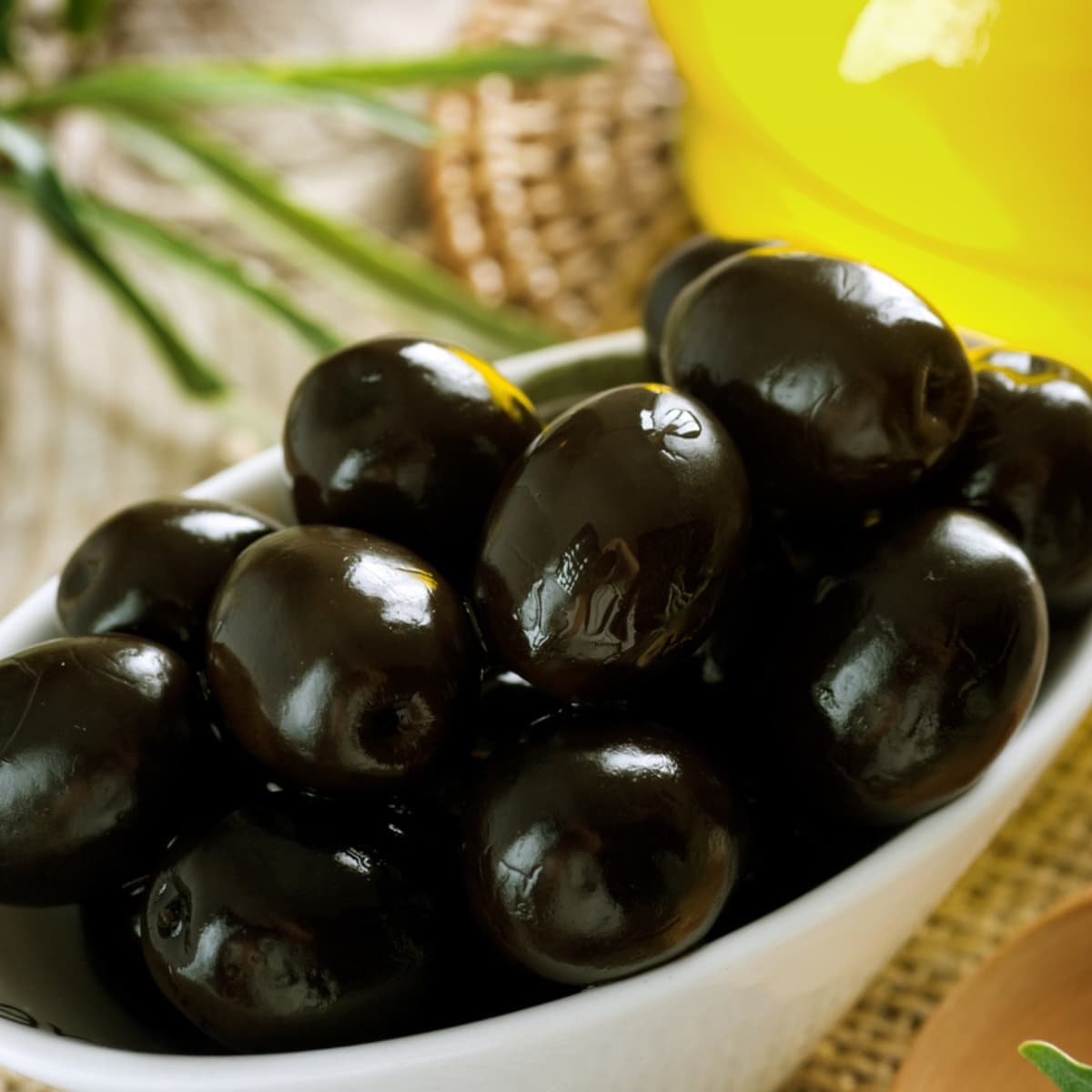
What Are Black Olives?
Olives are the fruit of, you guessed it, the olive tree! These juicy little numbers are called drupes or stone fruits.
That’s because they have a single pit or seed hiding inside.
Black olives are just ripe green olives. All olives start out green and go dark when they ripen. So, in a way, any ripe olive could be a black olive.
So when you hear “black olives,” just think of it as a catch-all term for various ripe olives.
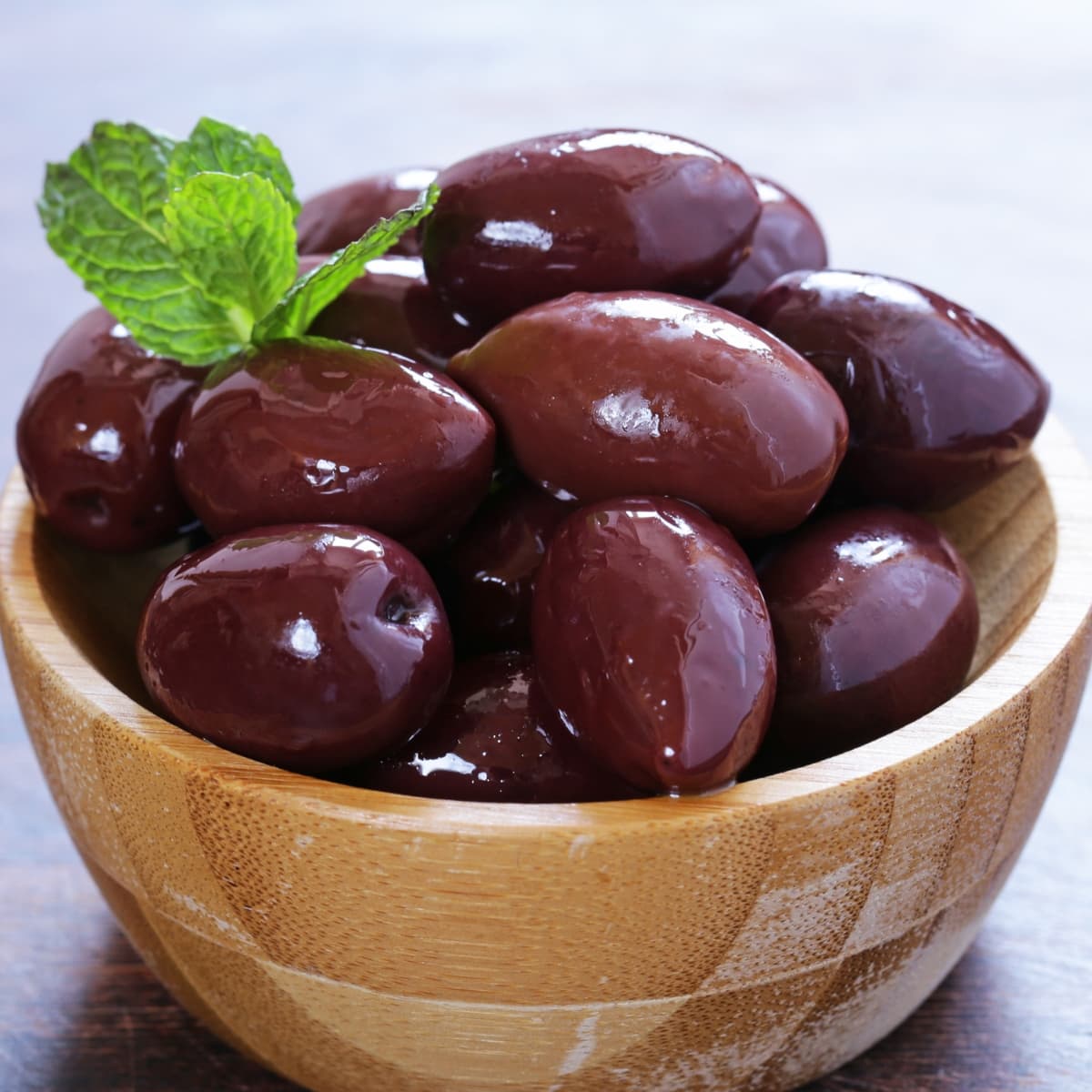
What Are Kalamata Olives?
Kalamata olives are well-known black olives, and they come straight from Greece.
The city of Kalamata gets the naming credit, as that’s where people first started growing them. Sometimes, they’re called “Greek olives.” How’s that for a nickname?
These olives have a bit of a green thumb secret: their trees have larger leaves. Why’s that important? Bigger leaves soak up more sunlight, and that’s an olive-growing goldmine.
And speaking of their looks, Kalamata olives boast a deep purple color. They ripen right on the trees, getting all nice and ready for picking.
Some big orchards might use machines to pluck these olives from the branches. But some prefer the old-fashioned way: hand-picking.
The gentle touch helps protect the olive’s delicate skin.
Can You Substitute Kalamata Olives with Black Olives?
Black olives are known for their mild flavor. They blend well in many dishes, especially in pasta sauce.
Kalamata olives have a much stronger, briny taste. They can dominate a dish with their bold flavor, which might not always suit you.
Yes, you can substitute one for the other. But proceed with caution.
If you’re using black olives instead of Kalamatas, use more to ensure the flavor comes through.
On the flip side, Kalamata olives can easily overpower a dish, so use them sparingly. A little can go a long way.
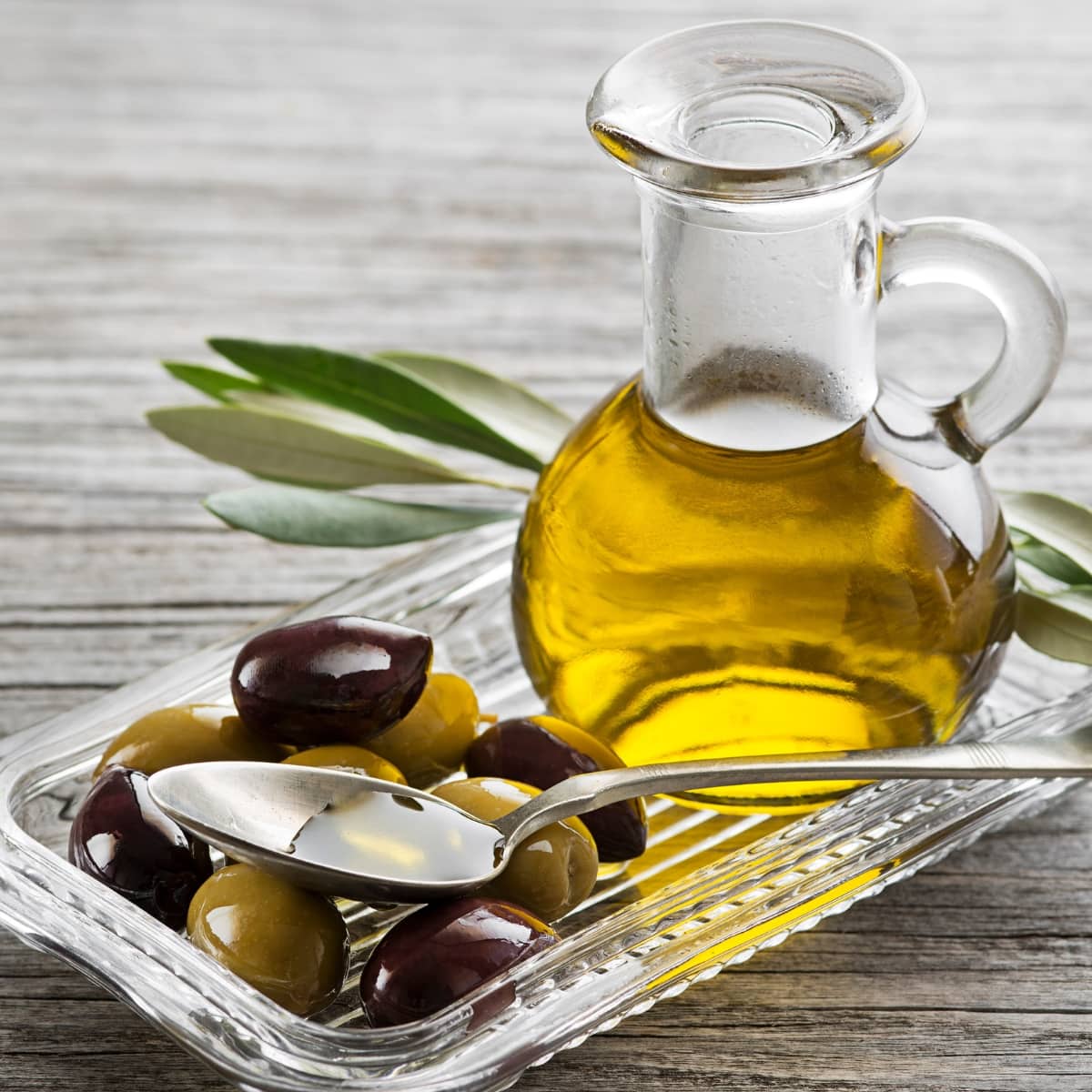
What Type of Olives Are Used For Olive Oil?
Did you know the olives you enjoy on your plate are usually not the same ones used to make olive oil?
Average table olives are oily, and yes, they can yield oil. But don’t expect them to produce the olive oil you pick up at the store.
Olives grown specifically for olive oil have a higher oil content, which makes them perfect for pressing into oil.
The flavor is robust, sometimes even peppery. It’s not what you’d expect from your typical snacking olive.
